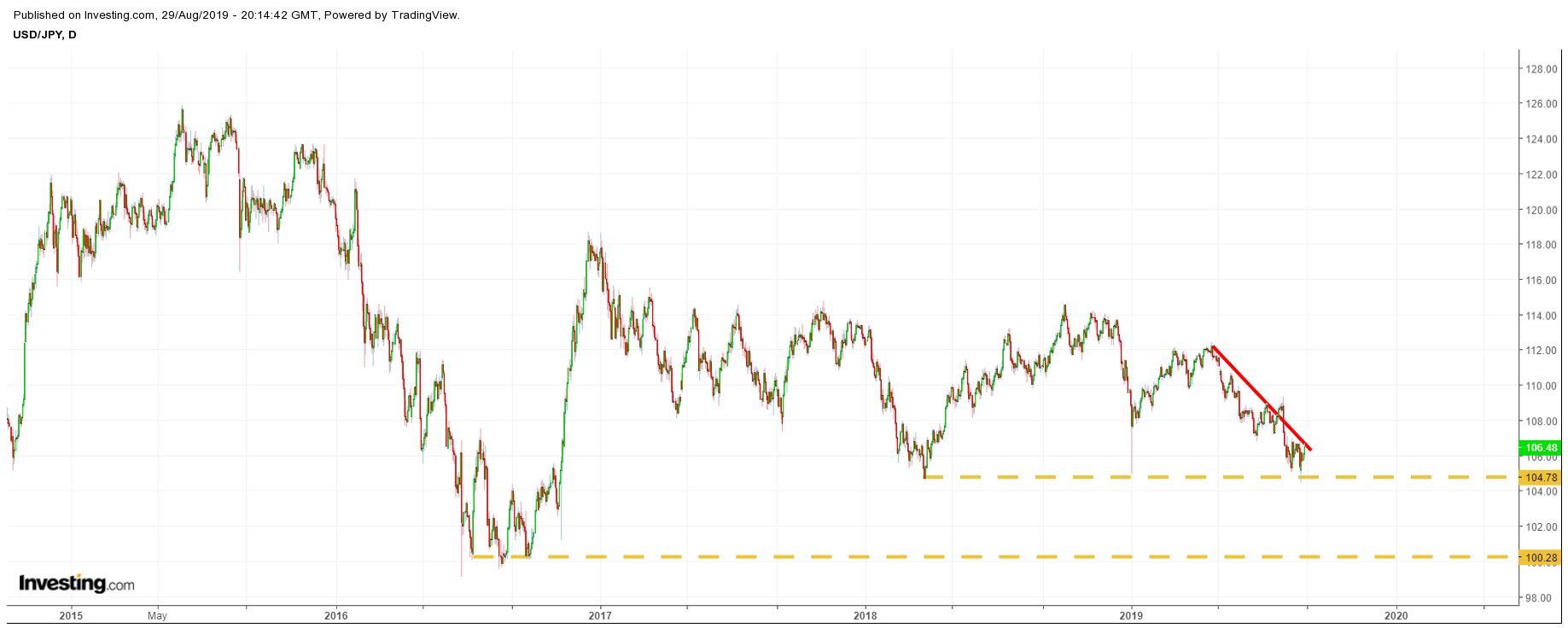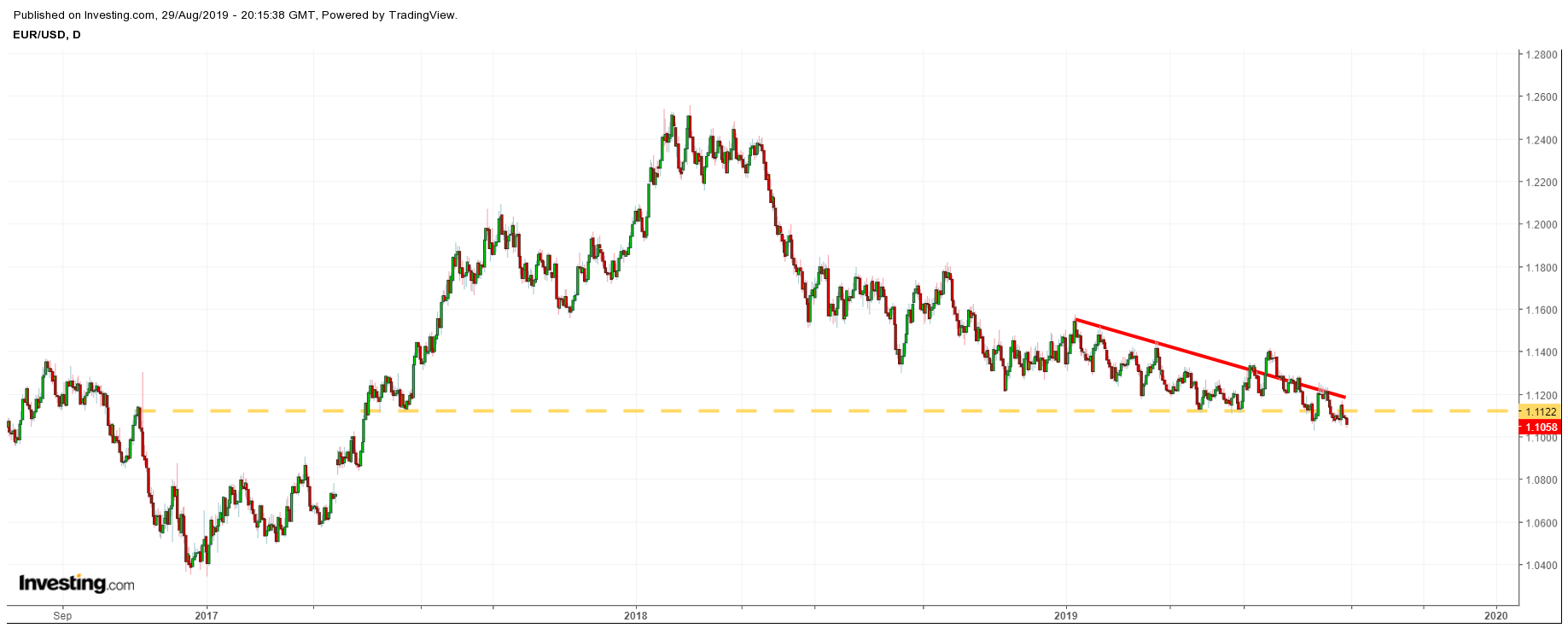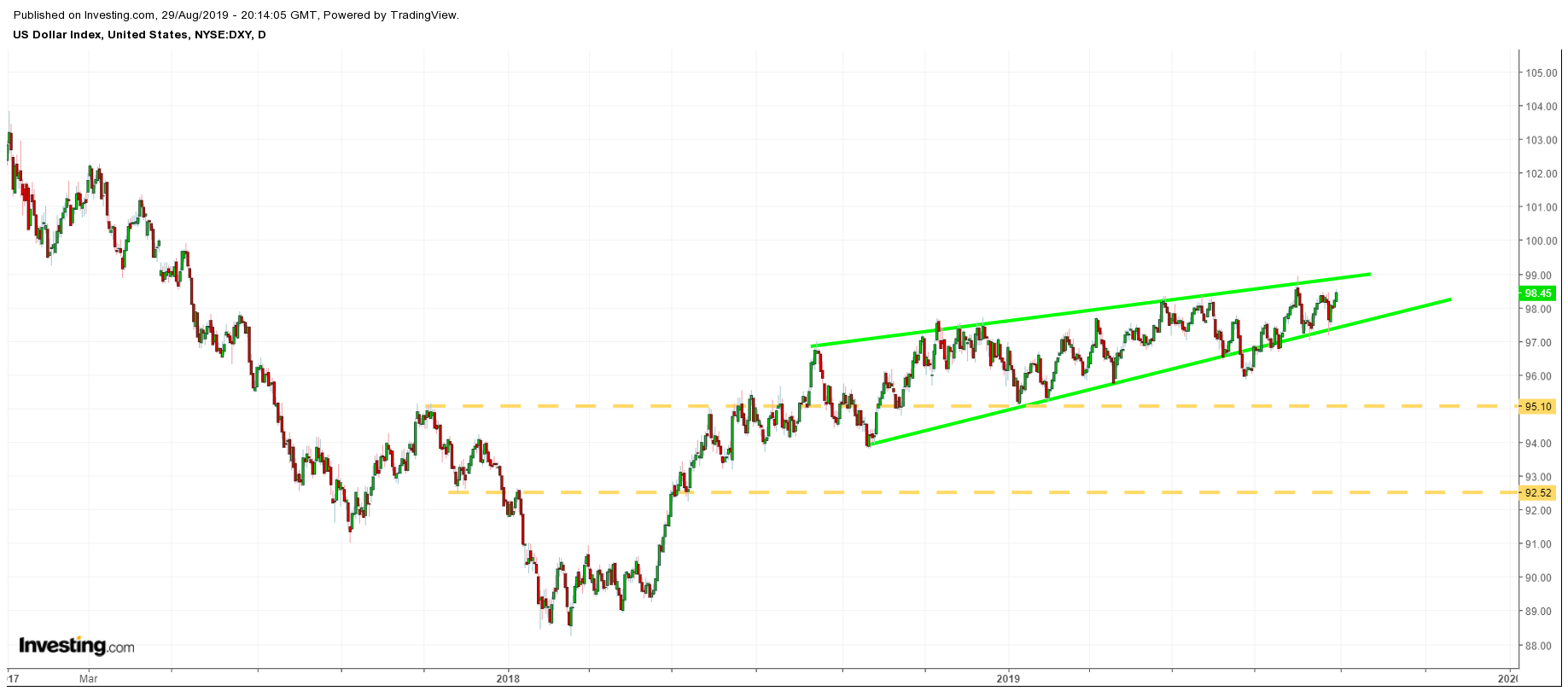This post was written exclusively for Investing.com
President Trump may finally get his wish for a weaker U.S. dollar. The dollar has been stubbornly strong since the spring of 2018; however, there are signs that its reign may be coming to an end. Yields have been falling around the world. However, they have been falling at an even faster pace in the U.S. It has resulted in spreads between U.S. and global yields to contract, and that should help to drive the dollar lower versus a basket of currencies.
The dollar has already started to weaken versus the Japanese yen. It looks as if the weakening versus the euro may not be far behind. Should the dollar weaken, it could create an interesting scenario for the Fed as it embarks on easing monetary policy.
A Strong Dollar
The dollar index has risen by nearly 11% since the spring of 2018. However, the significant advance in the dollar index has stalled out and instead traded sideways since the fall of 2018, in a range of 96.50 and 99. Now with the spread in yields contracting, the dollar could begin a steep decline.
The Yen
The decline has already started versus the Japanese yen as the spread between the U.S. and Japanese 10-year bonds have contracted by around 135 basis points since November 2018 shrinking to 1.75%. Over the same period the Japanese yen has strengthened versus the dollar by about 7% to approximately 106 from 115. There are signs that the yen could strengthen further perhaps back to 100. The yen has been trending towards 100 since April, and should it drop below technical support at 104.80, it could trigger that further strengthening.

The Euro
The next shoe to drop for the dollar is against the euro, as the spread between U.S. and German 10-year bonds have contracted by roughly 65 basis points since November to approximately 2.2%. As noted in an article last week, that spread could drop to around 2%. As that spread falls it should help to make the euro stronger versus the dollar. In fact, since April, the euro has stabilized around 1.10 to 1.11 to the dollar despite the prospects of the ECB launching a massive stimulus policy at its September meeting.
The interesting thing about the euro is its ability to hold firm ahead of monetary easing. It would indicate that perhaps the currency market is expecting the Federal Reserve to be more aggressive and to maintain a prolonged easing stance as compared to the ECB. Otherwise, the euro should be weakening substantially versus the dollar ahead of the ECB meeting in September. 
How Much Could The Dollar Weaken?
While it may be too soon to know just how much the dollar index could fall over a long period. It seems reasonable that it could weaken to around 95 on the dollar index, a decline of over 3%. After that, the next significant level of technical support for the index would not come until 92.50, a drop of almost 6%. 
Overall, the stable dollar may be suggesting that its recent reign is topping out and that the period of dollar strength may be coming to an end. It will add an interesting wrinkle to the Fed’s plan to cut interest rates too aggressively. If the dollar does begin to weaken, then it is likely to stoke the flames of inflation sending commodities such as oil, copper, and iron ore prices higher.
It is an entangled world, and perhaps someday, the market and all central banks will be on the same page. However, until that day happens it seems that the ebbs and flows of which currency is the weakest will continue to flip flop. Meanwhile, the dollar could revert to the weakness witnessed throughout 2017 and part of 2018.
